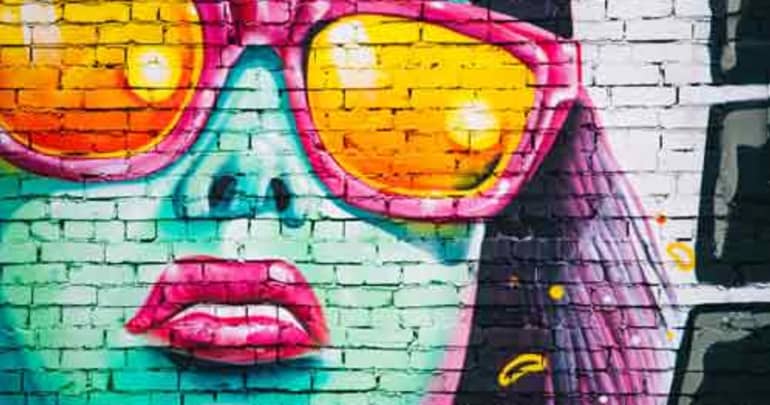Clinicians developed various methods of alternative therapy, such as art therapy for depression, over the years. Cognitive behavioral therapy still holds its place as the default type of treatment for mental illness. It proved its ability to withstand the test of time as other methods came and went.
At the same time, alternative types of treatment have a place in an effective, well-rounded plan of care. Art therapy might seem like a childish way to treat a severe mental illness like depression. To those not familiar with it, it may sound like an expensive arts and crafts session. There is much more depth to an art therapy session than you think, though.
How effective is art therapy for depression? Continue reading to learn more about how practiced clinicians integrate art into mental health treatment.
Using Art Therapy for Depression
Art therapy is much more than drawing or painting in the presence of a therapist. While a session does include those activities, there are much deeper forces at play. Cognitive behavioral therapy, dialectical behavior therapy, and medication are all helpful types of treatments. Art therapy touches something in people that those methods can’t reach, though.

What is Art Therapy?
Art therapy combines the creative process with psychology for a new approach to healing. Clinicians use it to help individuals explore their emotions and address unresolved issues. It offers a more accessible way to achieve this than through regular talk therapy. The end goal is fewer and less severe symptoms as well as increased self-esteem and self-awareness.
Art therapy as a concept is nothing new. People used art from the beginning of time to communicate and process events. From drawing and painting to writing and carving, millions of people used throughout the years. Whether or not they struggled with depression or other mental illness, it seemed to help.
Incorporating art into the realm of clinical psychology is still in its first century of use, though. The British artist Adrian Hill first used the term “art therapy” in 1942. Psychologists adopted early methods of the practice into their own offices soon after.
There were no certified art therapists during the method’s infant stages. Psychologists and psychiatrists with other specialties began using it with their patients, though. They noticed positive results and began developing a more intentional approach.

Art Therapy Today
Today psychologists use art therapy for depression on a more intentional basis. There is no “one-size-fits-all” in art therapy. Art therapists use plenty of different mediums depending on the person they’re working with. Magazine collages tend to help those less comfortable with art. Others might prefer working with pencils or markers or acrylic paint.
The medium isn’t the important part; it’s the process. There isn’t as much interaction between the therapist and the client as there is in traditional talk therapy. Instead, art therapy for depression provides a way for therapists to observe the more subtle behaviors of their clients. They look for how long it takes someone to get started or the points at which they pause.
Usually, the therapist waits until a person completes their piece to interject. After finishing up, the person has a piece of art in front of them regarding a certain subject or topic. It provides a physical way to look at the problem from a new angle or perspective. Then they can discuss with their therapist the process it took to make their piece.

Have you ever wondered, “Is Suboxone an opiate?” It’s one of the drugs used most often to treat opiate and opioid withdrawal symptoms so read to find out.
More infoWho Does Art Therapy Help?
Psychologists use art therapy for depression along with multiple other mental illnesses. People with anxiety, panic disorders, and trauma also see positive results with art therapy. It’s also used with people of all ages, from children and teenagers to the elderly. Art offers an accessible way for individuals from all walks of life to express themselves.
Additionally, art therapy is not a method used only with artists or other creative individuals. This is one of the most important things to remember when considering using art therapy for depression. In fact, everyday people who don’t consider themselves artists may see some of the most positive results.
When provided a safe space to express themselves creatively, many of these “non-creatives” discover a creative side they didn’t know existed. Holding the art they created themselves offers a sense of pride and accomplishment. It provides tangible evidence of their willingness to be vulnerable and open to change.
Is Art Therapy for Depression an Effective Treatment?
Numerous studies reveal the benefits of using art therapy for depression. People with severe depression have likely tried cognitive behavioral therapy before. They understand how the process works. Art therapy gives them a new way to work through their experiences.
The practice essentially gives people a mirror to look at their minds and process events in a different way. Some therapists delve into the symbolism of some art while others focus on the production of it. Ultimately, when clinicians use a methodical approach while keeping sessions free-flowing, art therapy shows positive results.

Addiction Treatment Centers with Art Therapy
Some addiction treatment centers also employ the use of art therapy for depression and anxiety associated with addiction. Many addicts and alcoholics have a creative side they lost touch with over the years. Art therapy helps them rediscover this side of themselves.
Hawaii Island Recovery uses art therapy for depression along with many other alternative treatment methods. To find out more about seeking help at our facility, call our admissions office at 877-721-3556. Take the first steps towards getting back to a happy, healthy life today!
 Hawaii Island Recovery
Hawaii Island Recovery 










